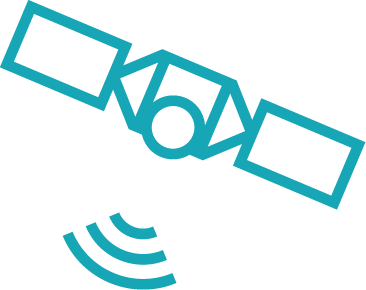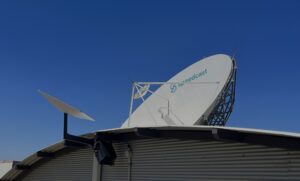In today’s fast-paced technology landscape, remote connectivity customers have come to benefit from the latest capabilities offered by enterprise SD-WAN solutions.
When it comes to designing and optimizing a Software-Defined Wide Area Network (SD-WAN), two key concepts often come into play: bonding and load-balancing. While both aim to improve network performance and reliability, they differ significantly in their approach and application. Choosing the right strategy for your SD-WAN network can be a daunting task, especially for organizations with complex network requirements. At Speedcast, our technology team works with customers to break down the differences and provide guidance on which approach is best suited for specific SD-WAN needs.


Bonding versus load-balancing: What’s the difference?
In simple terms, bonding combines multiple connectivity paths into a single, virtual circuit. Load-balancing, on the other hand, distributes network traffic across a pool of resources to optimize performance. While bonding requires all paths to have similar characteristics, such as latency and packet loss, load-balancing can handle paths with different characteristics, making it a more practical solution for complex networks.
The Limitations of Bonding
Traditional bonding technology was designed to blend multiple fiber-optic paths into a single, virtual circuit using packet-level bonding. That technology, however, has some limitations since it requires all paths to be nearly identical in latency, packet loss and other characteristics, which can be challenging to achieve in real-world scenarios. Moreover, bonding may not be the best approach when dealing with vastly different links, such as LEO and GEO services, as it can lead to an inconsistent user experience.

The Power of Load-balancing
Load-balancing, on the other hand, allocates entire data flows to each WAN fairly, allowing multiple links to produce a higher throughput in aggregate. This approach irons out the differing performance of paths, ensuring a consistent user experience even when switching between services with vastly different latency. In testing, Speedcast has successfully load-balanced traffic across multiple LEO providers, achieving great speeds and consistent performance.
Application Steering: The Key to Optimizing Performance
Speedcast SD-WAN solution is built into our SIGMA intelligent edge platform. It allows for selective routing of applications, known as application steering, over the most suitable WAN link. This means customers can choose to send applications that require Committed Information Rate (CIR) over a GEO VSAT link, while sending crew internet browsing traffic over a LEO service, such as Starlink and OneWeb. Our enterprise SD-WAN solution can also apply IP SLA rules to a path, ensuring that real-time traffic like Microsoft Teams and WhatsApp calls are seamlessly moved to the next best WAN path if the primary path is unavailable.
Why it matters
Understanding the differences between load-balancing and bonding is crucial for remote site operations. By choosing the right approach, operations can optimize their network performance, reduce latency, and ensure a consistent user experience. With Speedcast’s enterprise SD-WAN solution, customers enjoy granular and automated control over the routing of applications in multipath, multi-orbit networks, reducing the IT support burden and ensuring that remote sites stay connected and productive.
At Speedcast, our team of expert network engineers and technology specialists are dedicated to helping you make informed decisions about your network architecture. Leveraging our extensive hybrid connectivity toolkit and in-depth knowledge of networking technologies, we’ll work with you to design and implement a holistic enterprise SD-WAN solution that meets even the most complex networking requirements.

Speak with our experts about the best enterprise SD-WAN solution for your operational needs.



























